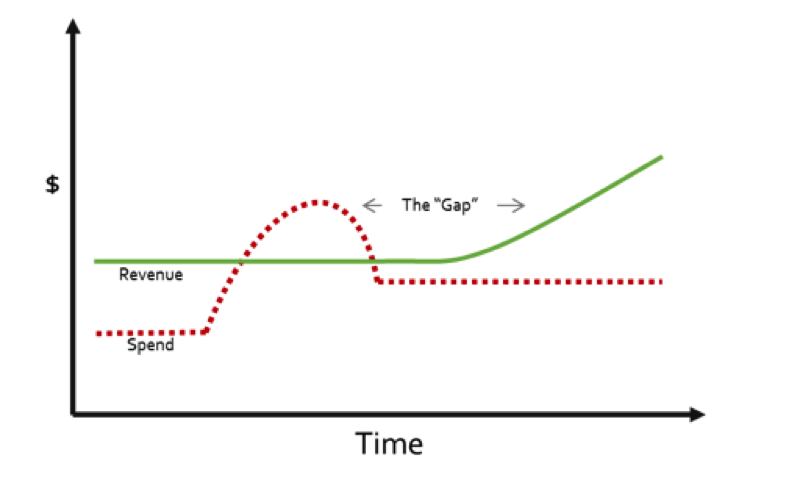Four Tactics to Bridge the Spend to Revenue Gap
B2B marketers must be prepared to answer questions regarding the revenue gap between spending the marketing budget and when leads and revenue begin to appear.
In B2B marketing, there exists a time period I call “the gap.” The gap is between the point when the organization starts spending the marketing budget and when leads and revenue begin to appear. The length and depth of the gap varies greatly, depending on the complexity of the buying process, but it is always there. For more transactional sales, the gap last for weeks, but for complex, high-value sales, it lasts several months.

Every B2B marketer will eventually have the task of negotiating this gap. At some point, all of us have probably been asked for results by management or stakeholders mere weeks into months-long programs.
So, what can you do to be better prepared to answer – or, better yet, avoid – those questions and bridge the revenue gap?
- Set expectations with all stakeholders. Clearly communicating when leads or revenue can be expected goes a long way in addressing this issue. This information should be documented and presented as part of the standard program planning and briefing activities. Don’t assume that all stakeholders automatically understand the typical wait time before leads and revenue begin to surface.
- Leverage the demand waterfall. Presenting results in the context of the demand waterfall provides the clearest way to show results. By showing the inquiries being generated and the potential leads flowing through waterfall, you unambiguously show that the program is working.
- Get consensus on which leading indicators to track. Almost every type of marketing tactic has related metrics that can serve as a rough proxies for the overall progress of the program. Before the program starts, get agreement from stakeholders on which metrics will be tracked and a baseline to define success. By meeting these goals, you give stakeholders a sense that the program is progressing satisfactorily.
- Build in early successes. Nothing disarms the question “Where are the results?” like showing actual results. To ensure that you’re in a position to provide results early, build quick wins into the program whenever possible. Quick wins can include results from smaller programs within the larger program that are designed to run at an accelerated pace, or specific quick-turn offers (e.g. live events) targeted at high-quality prospects. These quick wins demonstrate value and build momentum for your program.
Employing these approaches won’t keep people from asking you “Where are my leads?” the day after an event, but they should at least reduce this type of questioning and give you the confidence to provide solid answers.